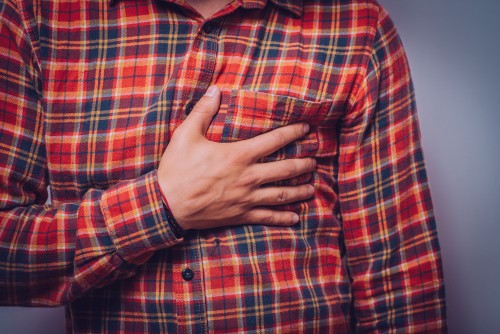A heart attack is a life-threatening condition, with patients remaining at risk of premature death long after the actual attack: 50 to 60 percent of patients die subsequently as a result of sudden cardiac death, triggered by cardiac arrhythmia. The most effective treatment currently available – a pacemaker – stops cardiac arrhythmias. However, it cannot prevent them from reoccurring. Researchers at Friedrich-Alexander-Universität Erlangen-Nürnberg (FAU) and the University of Bonn have developed a gel that should do precisely that.
Heart attacks remain life-threatening even after the actual attack has passed
A heart attack is not only an acutely life-threatening condition, it also entails severe long-term health risks: 50 to 60 percent of patients die subsequently as a result of sudden cardiac death, triggered by cardiac arrhythmia.
Why is this the case?
“The problem are the scars that result from a heart attack. Unlike healthy tissue, they disrupt electrical signals, thereby preventing the cardiac muscle cells from communicating effectively with each other and beating in rhythm,” explains Felix B. Engel, Professor of Experimental Renal and Cardiovascular Research at FAU and at Uniklinikum Erlangen.
Pacemakers only treat the symptoms and not the underlying problem
The most effective treatment to date to stop cardiac arrhythmias and prevent sudden cardiac death involves surgically implanting a device known as a pacemaker. They are also referred to as implantable cardioverter defibrillators or ICDs for short. They recognize ventricular arrhythmias and give an electric shock to the heart, resetting it to the normal rhythm. The problem: pacemakers are not able to prevent the underlying problem, i.e. the occurrence of cardiac arrhythmias.
Furthermore, the frequent shocks of the pacemaker continue to damage the heart, cause considerable mental distress for patients and impair their quality of life as a result.
Can a gel prevent cardiac arrhythmias?
A team of researchers at FAU has developed a hydrogel consisting of collagen as an effective and well-tolerated carrier substance and the electrically conductive substance PEDOT:PSS. This gel should prevent cardiac arrhythmias.
How exactly does that work?
“We can inject the gel directly into the scar tissue in the heart. This essentially electrifies the heart tissue, allowing cardiac muscle cells to communicate more effectively with each other again,” explains Dr. Kaveh Roshanbinfar, a research associate in the Engel group and the lead author of the study.
When will the gel be available?
That will still take a while: Initial experiments in animal models have indicated that the hydrogel successfully prevents arrhythmias and ventrical tachycardia, thereby possibly rendering the high-energy shocks produced by ICDs obsolete. However, a lot of research still remains to be done until patients can use the hydrogel. Prof. Dr. Felix Engel explains why: “One aspect is that scars left in humans after a heart attack are much more complex than those in mice, for example. Another factor is that we are unsure how the human immune system will react to the hydrogel.”
As soon as that is clarified, the collagen PEDOT:PSS hydrogel could be tested initially on high-risk patients who find the high-energy shocks of the ICDs particularly burdensome.
Would you like further details on the research findings?
The full study Electrically Conductive Collagen-PEDOT:PSS Hydrogel Prevents Post-Infarct Cardiac Arrhythmia and Supports hiPSC-Cardiomyocyte Function is available online.
The study was conducted by Felix Engel’s working group in collaboration with heart research specialists from the University of Bonn,and physicists and experts in materials science and engineering from FAU.
More information on the field of research experimental renal and cardiovascular research.
Further information:
Prof. Dr. Felix B. Engel
Professorship for Experimental Kidney and Vascular Research
Phone: + 49 9131 85 35659
felix.engel@uk-erlangen.de

